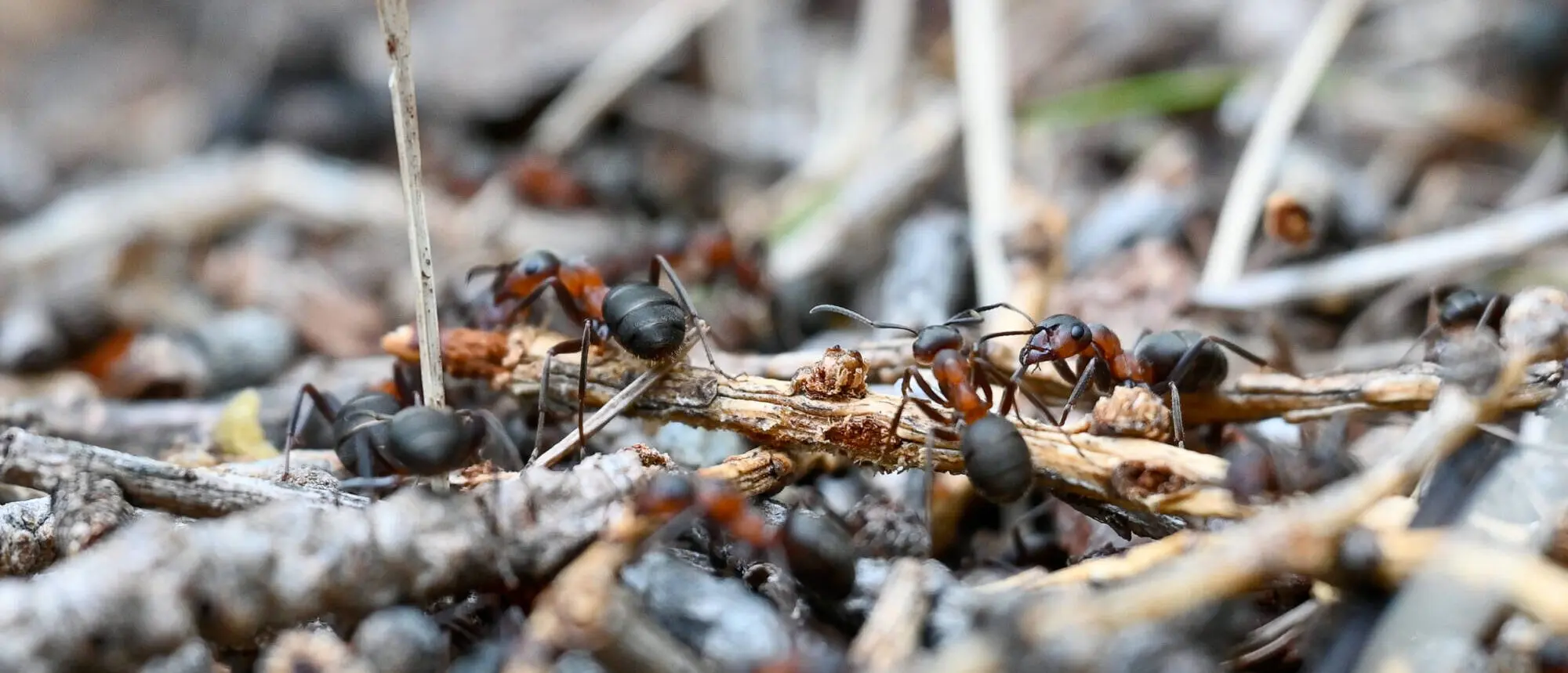Wood ants are an indication of an intact woodland ecological community.
Wood ants entered the Swiss political scene in 1966, when they were first listed as a protected species according to a federal act on the Protection of Nature and Cultural Heritage. At present there are 131 species of ants in Switzerland, 6 of which belong to the group of wood ants.
Of the 131 species of ants found in Switzerland, 35 are present in the Swiss National Park. Most noticeable are the red wood ant and narrow headed ant formica exsecta. Colonies of both species consist of numerous nests lying close together. Wood ants are found in most of the wooded areas of the Park, for instance in the Mingèr, Stabelchod, Trupchun valleys or on the way to Alp la Schera.
In a colony of wood ants there may be up to 150,000 individuals living quite happily alongside one another.
Anthills are wonderful natural works of art and are very well ordered inside.
When walking in the Park, anthills of the red wood ant are a common sight. They consist mainly of spruce needles and may be as high as one metre. The narrow headed ant formica exsecta is also quite common; it uses dry plant material to build its anthills.
Birds sometimes voluntarily settle on a nest, spreading their wings so as to be sprayed with formic acid, which helps to fight vermin. This practice is known as “anting”.
Wood ants “farm” aphids.
In one summer season, an ant colony of approx. 150,000 individuals “milks” around 10 kilos of honeydew from aphids. By stroking the aphids, the ants manage to extract the coveted liquid which serves as food. In return, the ants protect the aphids against predators such as ladybirds.


